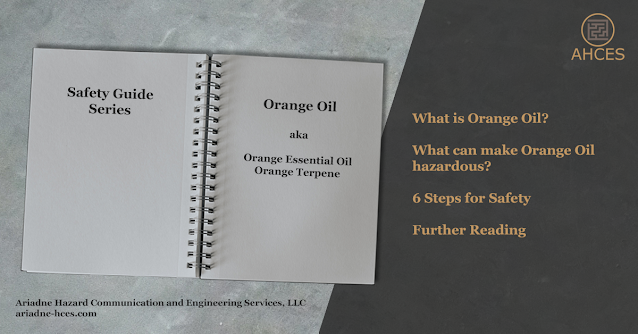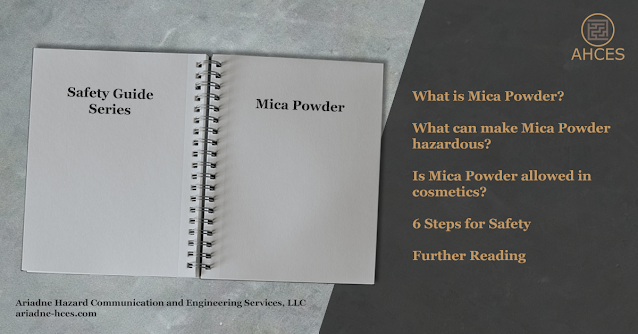Caffeine Safety Guide
What is Caffeine?
Caffeine is a naturally occurring organic compound found in many plants, notably the seeds of the Coffea genus and leaves of Camellia sinensis. Caffeine has a stimulant effect on the central nervous system when consumed and is the most commonly consumed stimulant globally.
Caffeine has the CAS Number 58-08-2.
Notable Properties of Caffeine
Pure caffeine is a solid at room temperature, with white needle-like crystals. Caffeine is soluble in water, as well as ethanol and acetone.
What Makes Caffeine Hazardous?
Caffeine can be toxic in high doses. This risk is increased when working with larger quantities of pure or highly concentrated caffeine. An oral dose of 18-50 grams has been recorded as lethal to adult humans. For children and animals, the lethal dose can be lower.
Symptoms of caffeine overdose can include but are not limited to convulsions, changes in heartrate, excitement, delirium, muscle tremors, and quickened breathing.
When solid, caffeine can be irritating to eyes and respiratory system on contact.
Caffeine is not classified as flammable or combustible for the purposes of workplace or transportation safety, but as it is an organic compound, it can still burn and act as a fuel source in a fire. In a fire, burning caffeine can give off harmful gases including carbon dioxide and carbon monoxide.
Caffeine Frequently Asked Questions
Are there different types of caffeine?
No, caffeine is a discrete molecular compound. Consuming caffeine in different forms, such as drinking coffee, tea, or soda, or taking a caffeine pill, may have a different effect on the body due to other chemical compounds present alongside the caffeine.
Are caffeine pills dangerous?
Caffeine pills contain a more concentrated dose of caffeine, with many over the counter products containing 100 to 200 milligrams of caffeine. In comparison, an 8-ounce cup of coffee typically contains 96 milligrams of caffeine, and an 8-ounce cup of black tea contains 48 milligrams of caffeine.
The greatest risk of caffeine pills is associated with taking a large quantity in a short period of time, particularly as taking a small pill is easier than drinking a quantity of liquid.
6 Steps for Safety
Step 1: Read the Warnings
When working with a product for the first time, always read all the safety documents first. This includes safety data sheets, which should be provided by the manufacturer or importer of the caffeine product. There may also be an OSHA chemical label or a Consumer Protection label on the packaging of the caffeine containing product. These documents all contain important information on the hazards of the product and instructions on how to mitigate those hazards.
Note that different products which contain caffeine can have different safety considerations depending on other ingredients and the relative concentrations of those ingredients. For example, a solution of caffeine dissolved in acetone will have an additional flammability hazard due to the properties of the acetone.
Step 2: Prepare Your Workspace
Creating a safe workspace, sometimes referred to as engineering control, is a key component of working safely with any potentially hazardous substance.
Caffeine can be worked with both as a solid crystalline substance, which can have dust related hazards, and as a liquid solution, which can have liquid splash related hazards.
For dust hazards, a dust collection system which can filter out any small organic particles is important. This prevents irritation from caffeine contacting the eyes or respiratory system as well as lessening the risk associated with caffeine toxicity from breathing in larger quantities of caffeine.
Step 3: Gather Your PPE
For handling concentrated caffeine containing products, the
following PPE is recommended.
- Eye Protection
- Safety goggles which form a protective seal around the eyes can be used to prevent caffeine dust or liquid droplets from reaching the eyes.
- Respiratory Protection
- Particularly with activities that are likely to cause airborne dust or liquid splash, such as powdering or pouring large quantities from one container to another, a respirator with an appropriately rated filter for organic substances is recommended to prevent inhalation.
Step 4: Clear Your Workspace
Having a clear workspace is important for safety as it can prevent accidents caused by tripping, as well as allowing you to easily spot any spills.
This is also a good time to ensure all engineering controls are functional. This includes any dust collection systems and appropriate ventilation.
Step 5: Do The Work
If engineering controls and PPE are used properly, working with caffeine can be done safely.
It is important if anyone working with caffeine begins showing signs of a caffeine overdose, that medical attention is sought immediately.
If work cannot be completed in one sitting, be sure to properly seal any caffeine containers to prevent spills or accidental release when not in use.
Step 6: Clean Up
Clean up any small drips or spills with an appropriate absorbent material.
Be sure to dispose of any waste in accordance with local regulations.
Further Reading
The National Library of Medicine has a PubChem article on Caffeine.
Check out the Safety Guide Series Hub for more safety guides.
Sources Cited
Mayo Foundation for Medical Education and Research (2025, February 6). Caffeine content for coffee, tea, soda and more. Mayo Clinic. Retrieved April 11, 2025, from https://www.mayoclinic.org/healthy-lifestyle/nutrition-and-healthy-eating/in-depth/caffeine/art-20049372
National Center for Biotechnology Information (2025). PubChem Compound Summary for CID 2519, Caffeine. Retrieved April 11, 2025 from https://pubchem.ncbi.nlm.nih.gov/compound/2519
National Center for Biotechnology Information (2025). PubChem Annotation Record for CAFFEINE, Source: Hazardous Substances Data Bank (HSDB). Retrieved April 11, 2025 from https://pubchem.ncbi.nlm.nih.gov/source/hsdb/36
National Oceanic and Atmospheric Administration (n.d.). CAFFEINE. CAMEO Chemicals. Retrieved April 11, 2025, from https://cameochemicals.noaa.gov/chemical/19945
Nehlig, A., Daval, J. L., & Debry, G. (1992). Caffeine and the central nervous system: mechanisms of action, biochemical, metabolic and psychostimulant effects. Brain research. Brain research reviews, 17(2), 139–170. https://doi.org/10.1016/0165-0173(92)90012-b





Comments
Post a Comment